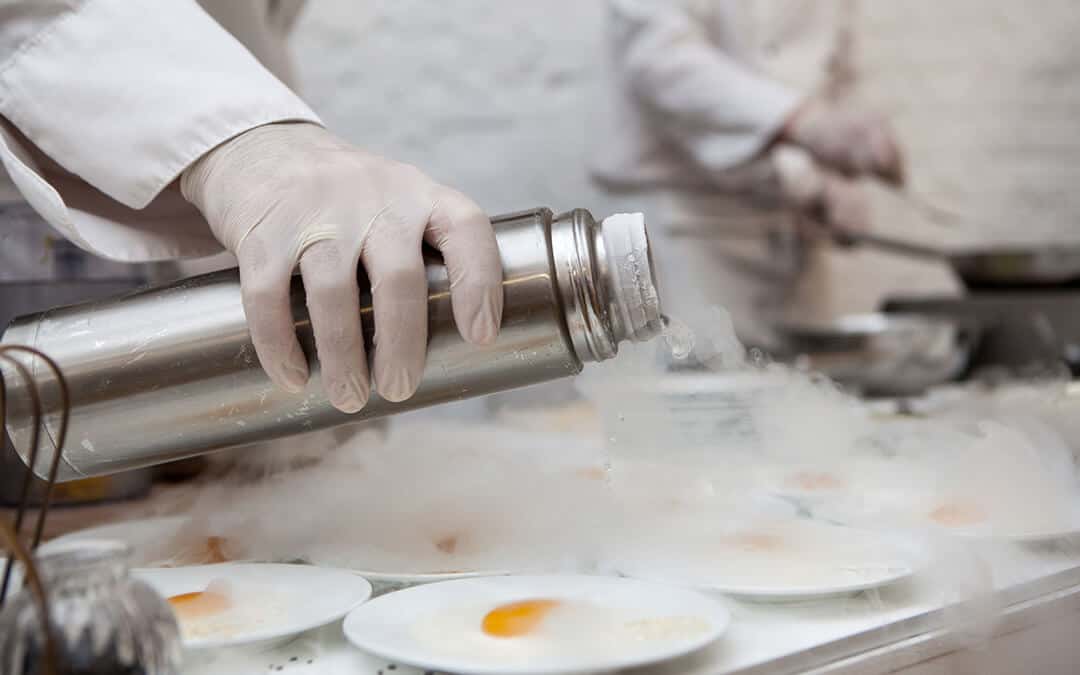According to American Chemistry Magazine1, nitrogen—in both its liquid and gaseous form—is proving “a beneficial ingredient for the prepared foods sector, with a range of creative applications, including freezing, packaging, mixing, coating, and grinding.” As you may, or may not know, food can spoil from microbial growth, discoloration, oxidation, or moisture loss. Frozen food processors today can, with the advances made in the use of nitrogen, avoid these hazards and better preserve the quality of their products by deploying a freezing system that uses liquid nitrogen. And—added bonus—it’s environmentally friendly, too. There are many advantages to using liquid nitrogen and gaseous nitrogen to freeze food (as opposed to mechanical freezing). Here are just a few.
1. Nitrogen is Faster at Freezing
Liquid nitrogen (which is the chemical that fuels the cryogenic system) takes just a few minutes to freeze food. Compare this to other more traditional systems, which take hours to accomplish their task of freezing food. Put simply: nitrogen is better because it’s faster and more efficient that mechanical freezing systems.

2. Nitrogen Produces a Higher Quality Product
Cryogenic, or very low-temperature freezing, results in very small ice crystals forming on the food being frozen, such as fresh fruits (blackberries, apples, etc.). Those small ice crystals trap the moisture in the fruit. This process results in less weight loss (from dehydration) for the fruit being frozen. This is what we want. Fruit with its moisture preserved is better than dried out “fresh” fruit any day of the week.
3. Nitrogen Reduces Microbial Growth
Gaseous nitrogen reduces microbial growth and extends the shelf life of the food. Nitrogen is one of the gases used in a food packaging process known as Modified Atmosphere Packaging (MAP). MAP is used, for example, to freeze-pack fresh foods from fish and meat to fruits and vegetables. According to American Chemistry Magazine, by replacing the breathable atmosphere in a frozen food package “with a pure gas or a gas mixture, including nitrogen, the shelf life of products can be significantly extended, helping them look, smell, and taste good far longer than they would otherwise.”
4. Nitrogen Can Streamline Operations & Save Money
According to Process Cooling Magazine2, nitrogen in both its liquid and gaseous form can result in a more efficient freezing operation, which can help you streamline your downstream processes. For example, West Liberty Foods used a combination of a cryogenic CO2 tunnel freezer and a crust-freezing method for a meat product, deli logs. By achieving just the right temperature along with the depth of crust-freeze, the company was able to “avoid bottlenecks and eliminate product losses,” which could potentially add up to hundreds of thousands of dollars a year on high volume processes. Those savings become even more important as the cost of raw ingredients and proteins continue to rise.
To learn more about CalOx’s services, please contact us today.
